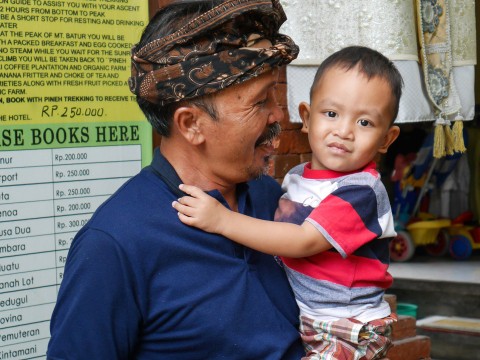While there are many heroes and anti-heroes in Balinese legends and folklore (like the legendary Rama and Hanoman) the Balinese also have their fair share of real-life heroes that helped fight against the Dutch during colonial times. Though these heroes may or may not have worn capes they are forever remembered (posthumously) as “National Heroes”. These two heroes are I Gusti Ngurah Rai and Gusti Ketut Jelantik.
Let’s start with I Gusti Ngurah Rai. The name kinda rings a bell, doesn’t it? It is, in fact the name of Bali’s only international airport! There are many locations named after this great hero like major streets and even buildings. In fact, he’s also featured on the blue 50.000 rupiah bill!
Now, I Gusti Ngurah Rai, or just Ngurah Rai was a young Lieutenant-Colonel who served in the People’s Security Army, the predecessor of the Indonesian National Armed Forces. He was born in Badung regency in January 1917. As the son of a camat (government officer below the regent) he was one of the lucky people to be able to attend Dutch school. After middle school, he went to various military schools such as Prayodha in Bali, the Corps Opleiding Voor Reserve Officieren in Magelang, and studied artillery in Malang. After Indonesia declared independence Ngurah Rai established the Lesser Sunda regiment of the People’s Security Army with his squad; the Ciung Wanara. He was inaugurated as a Lieutenant Colonel shortly after. Ngurah Rai learned that the Balinese kingdoms were fraternizing with the Dutch and the Dutch had deployed 2,000 troops on 2-3 March 1946 onto Balinese soil. The Indonesian forces were still divided so Ngurah Rai decided to take on the Dutch with his regiment; the Ciung Wanara. They fought their first battle at Tabanan. The fighting escalated on until 20 November 1946. On that date Ngurah Rai declared a puputan (battle to the death) against the Dutch troops at the historical location of Marga in the Tabanan regency. Ngurah Rai died in battle at the age of 29 in battle by protecting the scattered territories of Indonesia. In 1975 he was awarded with the posthumous title of National Hero by the government and also the title of Brigadier-General.
If Ngurah Rai was a passionate young soldier, Gusti Ketut Jelantik was a part of Balinese royalty and a statesman. No official records exist of his exact birth date so his age remains unknown. He was a Prime Minister for the kingdom of Buleleng, the only kingdom that openly resisted the Dutch.
Back in feudal times the Balinese kingdom had a unique maritime pact known as the tawan karang. Simply put, the pact states that if a naval vessel both military or nonmilitary was found to be sunken within the territory of a kingdom, that kingdom had full rights to it. So, if a sunken ship was found on the coasts of Buleleng all contents including the ship would became the property of the Buleleng kingdom. Nobody else could claim it, not even the Dutch. Tensions between the Dutch and the Buleleng kingdom grew when the Dutch insisted on the return of the contents of a sunken ship near the north coast of Bali. Apparently, there was precious cargo on the sunken Dutch merchant vessel. The kingdom resisted, citing their right to tawan karang. One of the vocal voices of the opposition was Gusti Ketut Jelantik. He declared, loud and clear that the kingdom would never bow down to the colonists demands. In 1846 the Dutch attacked Buleleng in response, resulting in the fall of Buleleng. More fighting followed in the next few years and Gusti Ketut Jelantik led the forces. However, Buleleng forces lost to the firepower of the Dutch army. Gusti Ketut Jelantik fled to Batur in Kintamani where he made his last stand. He died in battle. Later, in 1993, the Indonesian government awarded Gusti Ketut Jelantik with the posthumous title of “National Hero”.
So there you have it, true heroes from Bali!



